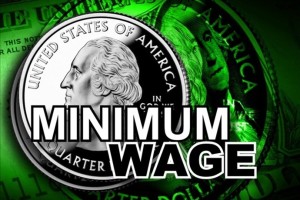The California paid sick leave law, also known as the Healthy Workplaces, Healthy Families Act of 2014, was signed into law by California Governor Jerry Brown, authorizing employers - including household employers - in California to provide their employees paid sick...
Blog Category:
Tax & Wage Laws
Understanding Senior Care Payroll & Taxes
Have you hired a senior care employee to work in your home? Follow this senior care payroll and tax guide to ensure you are compliant with employment laws. Step 1 - Determine if you have an employee or independent contractor The main difference between an employee and...
Employee Changing Name?
Question: If your nanny or other household employee gets married and asks you to start issuing paychecks in their married name, what are your record-keeping responsibilities? When an employee officially changes their name for marriage or any reason, the employee needs...
FLSA Rules for Domestic Workers
As a household employer, you have likely heard about the U.S. Fair Labor Standards Act (FLSA). What is the FLSA and what are the FLSA rules for domestic workers? The FLSA establishes minimum wage, overtime pay, recordkeeping, and child labor laws affecting full- and...
Does My Nanny Have to Pay Taxes?
A nanny or other employee who works in your home is responsible for reporting and paying required payroll taxes. It is worth making sure that they are aware of their responsibilities at the start of employment, if they do not already know. As a nanny, or other...
Massachusetts Domestic Workers’ Bill of Rights
The Massachusetts Domestic Workers' Bill of Rights was signed into law in July, making Massachusetts the fourth state in the country to provide protections for nannies, housekeepers, and other domestic employees. While most provisions of the new law do not take effect...
Minnesota Minimum Wage Increase
The Minnesota minimum wage increase takes effect tomorrow, August 1, 2014. This is the first of several planned increases over the next two years. For large employers (businesses with $500,000 or more in gross annual sales) the minimum wage will increase to $8.00 an...
Penalties for Violating Wage and Hour Laws
Ensuring fair compensation is one of the keys to retaining a nanny or other household employee. To combat the double threat of an employee feeling underpaid or being pursued by another family, employers must make sure that their employees are paid for all hours...
July 1st Minimum Wage Increases
On July 1st, 2014, one week from today, two minimum wage increases will take effect: California - the minimum wage will rise from $8 to $9 per hour for all employees, with some exceptions. All employers in California must adhere to the new state law; this includes...
Sign up for our Newsletter
Household Employer Digest











 Get your free:
Get your free: